Abstract
The disposition kinetics of acetazolamide (AZ) has been studied in four young and four elderly healthy volunteers, each of whom received an intravenous bolus dose of 5 mg/kg. The concentration time profile of AZ was determined in plasma, plasma ultrafiltrate, erythrocytes and urine. While the mean area under unbound plasma concentration-time curves was 81% higher in elderly subjects, areas based on total drug concentrations were similar in both groups. The mean renal plasma clearance was similar in both groups. The mean renal plasma clearance was similar between young and old for total AZ, but was significantly lower in the elderly for unbound drug (8.88 ml min-1 kg-1 vs 15.7 ml min-1 kg-1). Renal clearance of unbound AZ correlated well with creatinine clearance (r = 0.846, P less than 0.01). Peak erythrocyte levels were 45% higher in the elderly group (37.2 micrograms/ml vs 25.3 micrograms/ml) and were paralleled by a 46% increase in the mean area under the erythrocyte concentration-time curve for this age group. The unbound fraction of AZ in plasma was significantly greater in elderly than younger subjects (6.9 vs 4.1%, P less than 0.05). Integrated AZ erythrocyte concentrations correlated positively with AZ free fraction in plasma and inversely with its unbound renal clearance. These observed differences in AZ disposition between elderly and young have served to clarify host factors which may importantly influence susceptibility to adverse effects.
Full text
PDF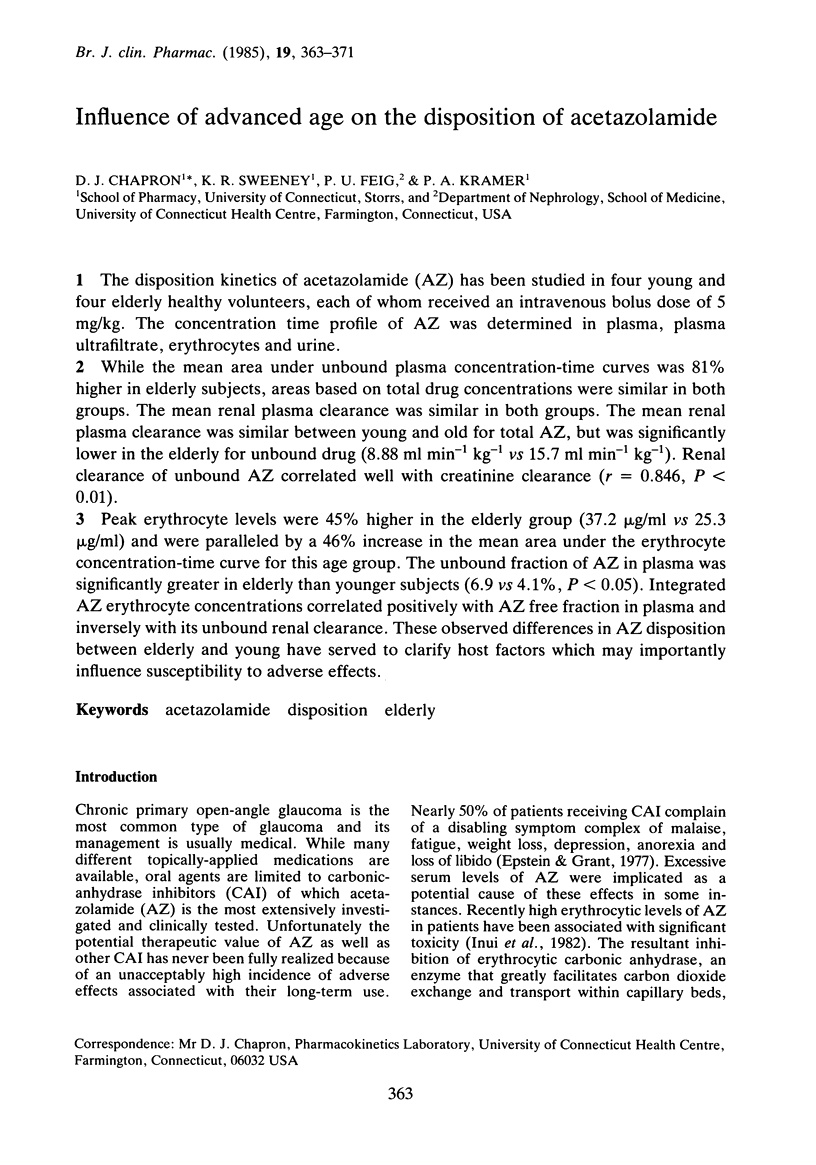
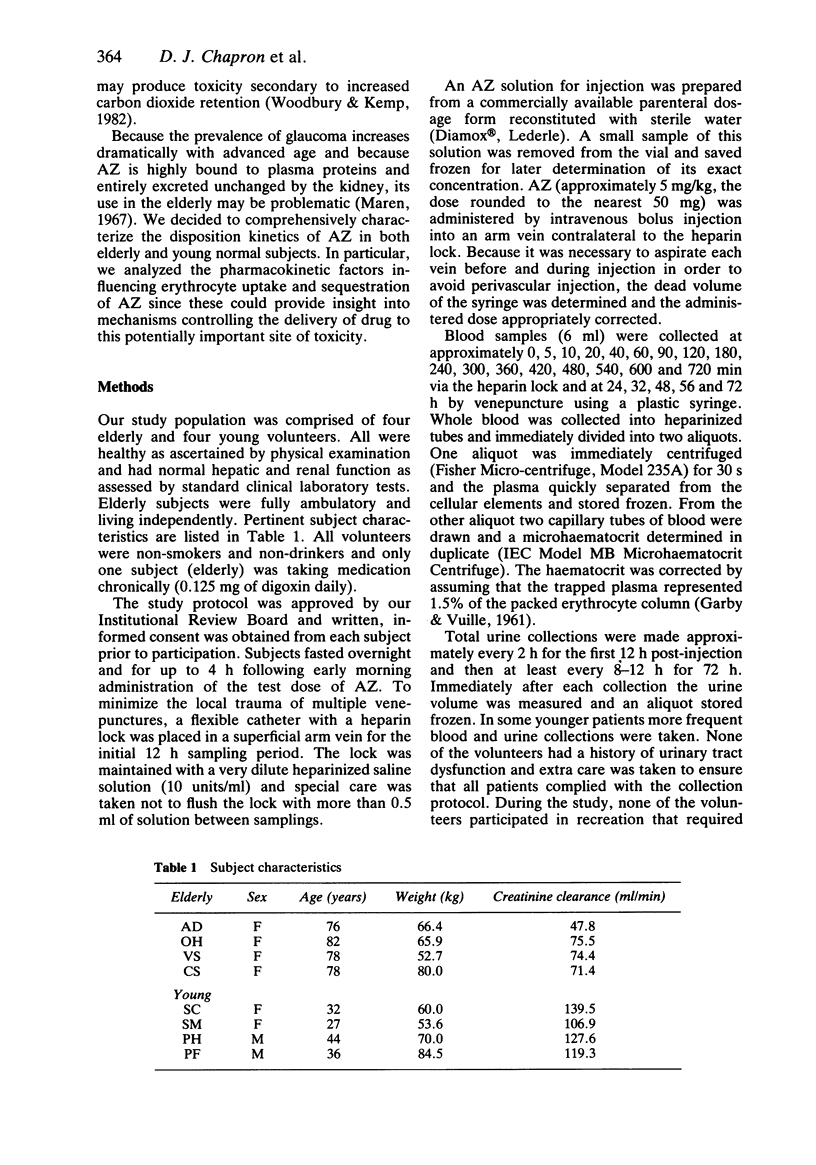
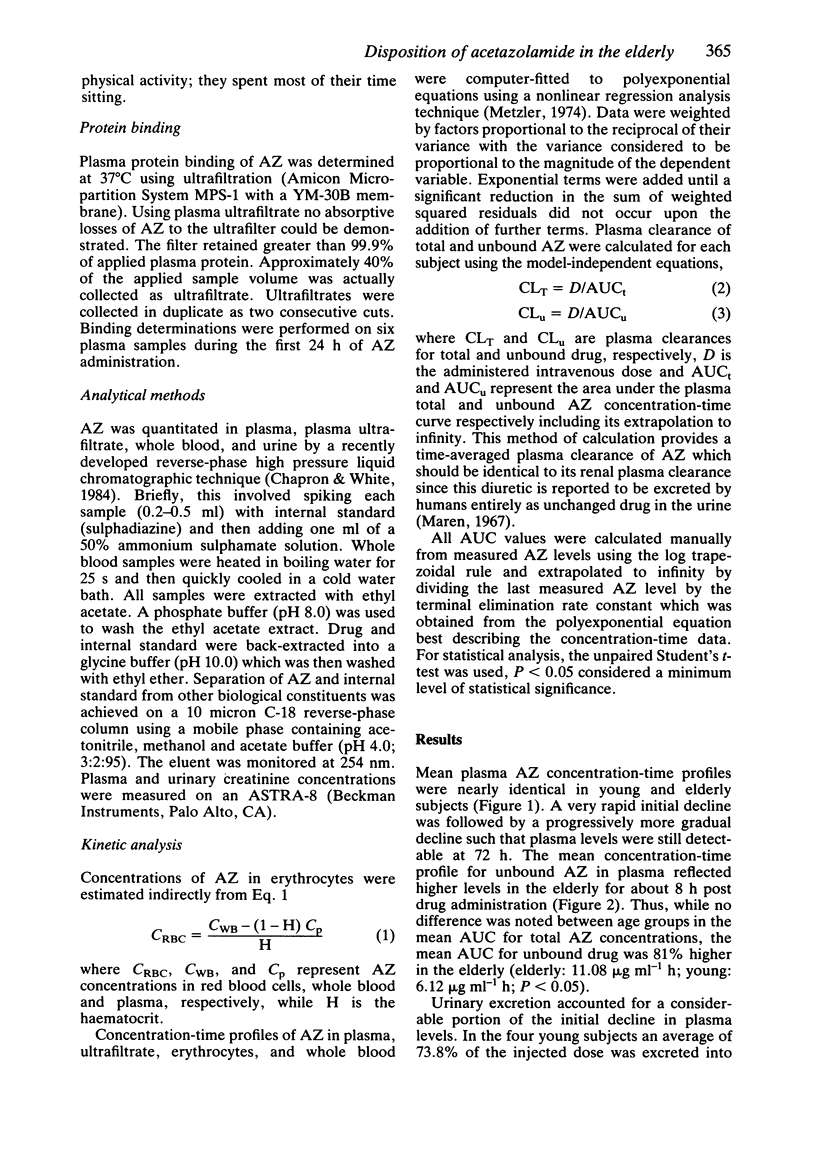
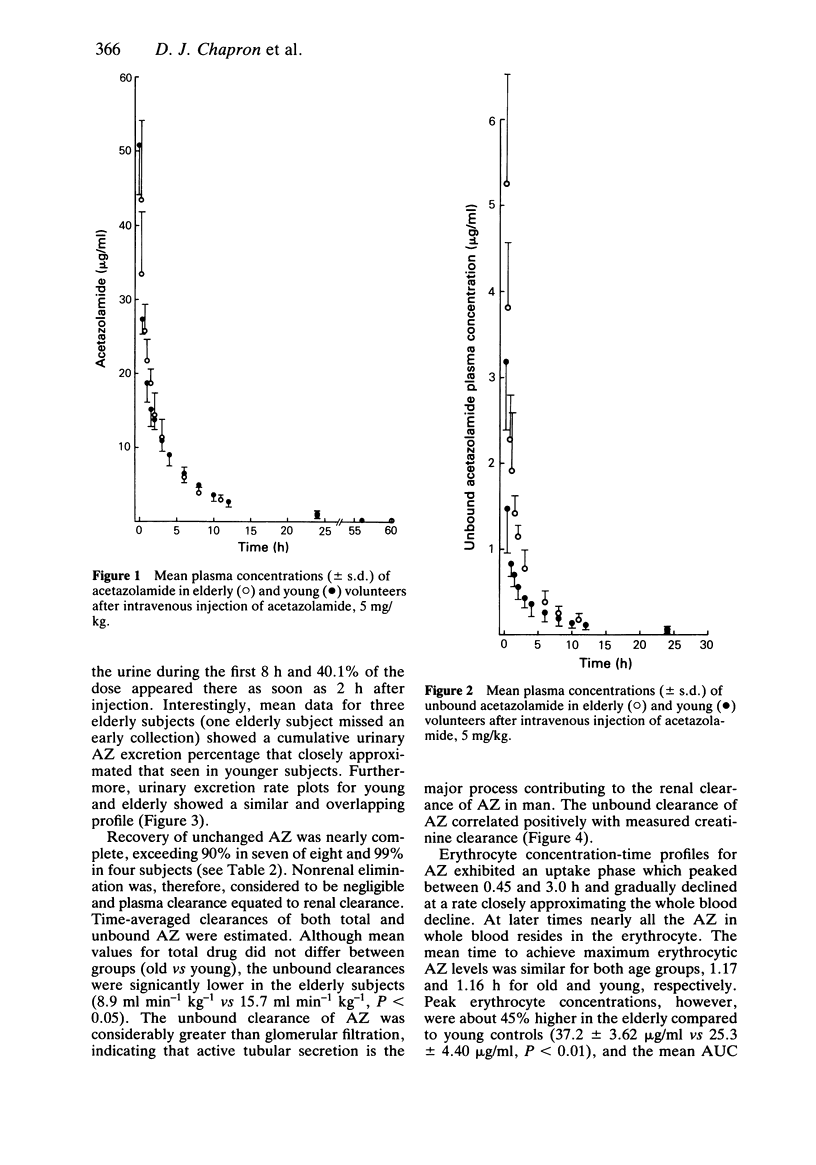
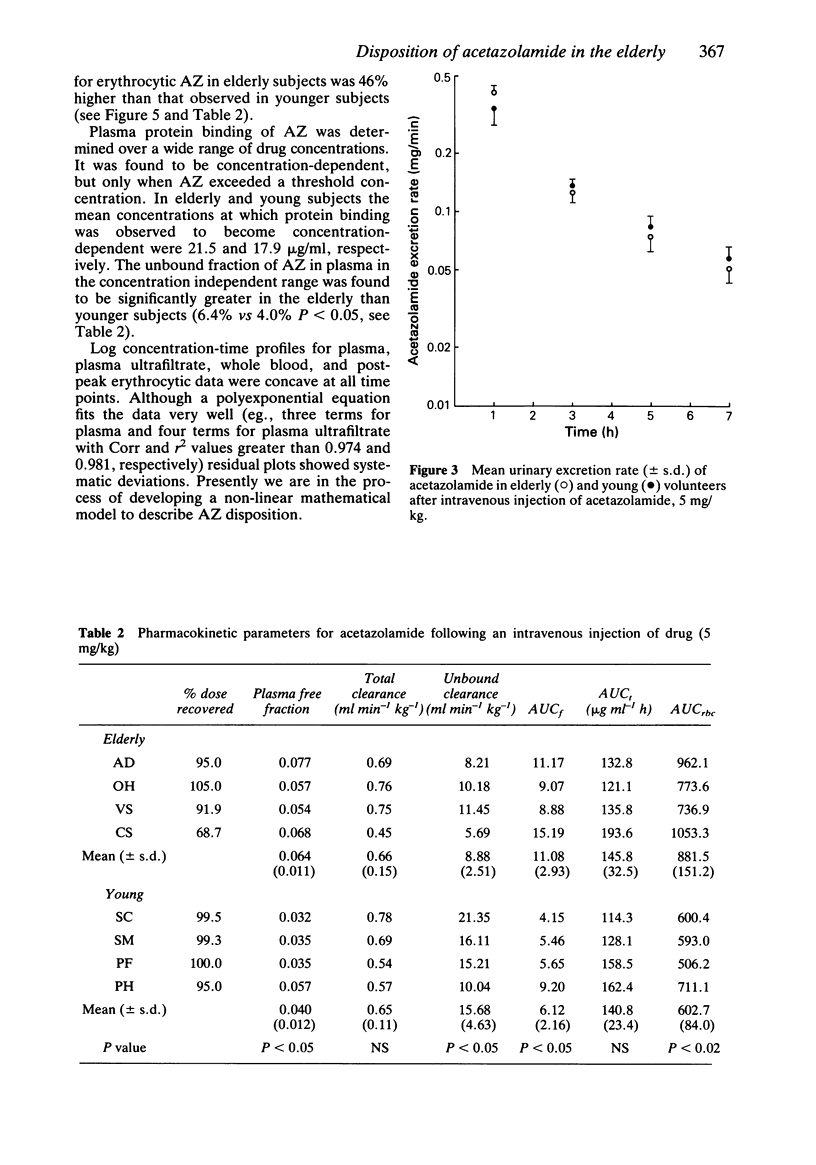
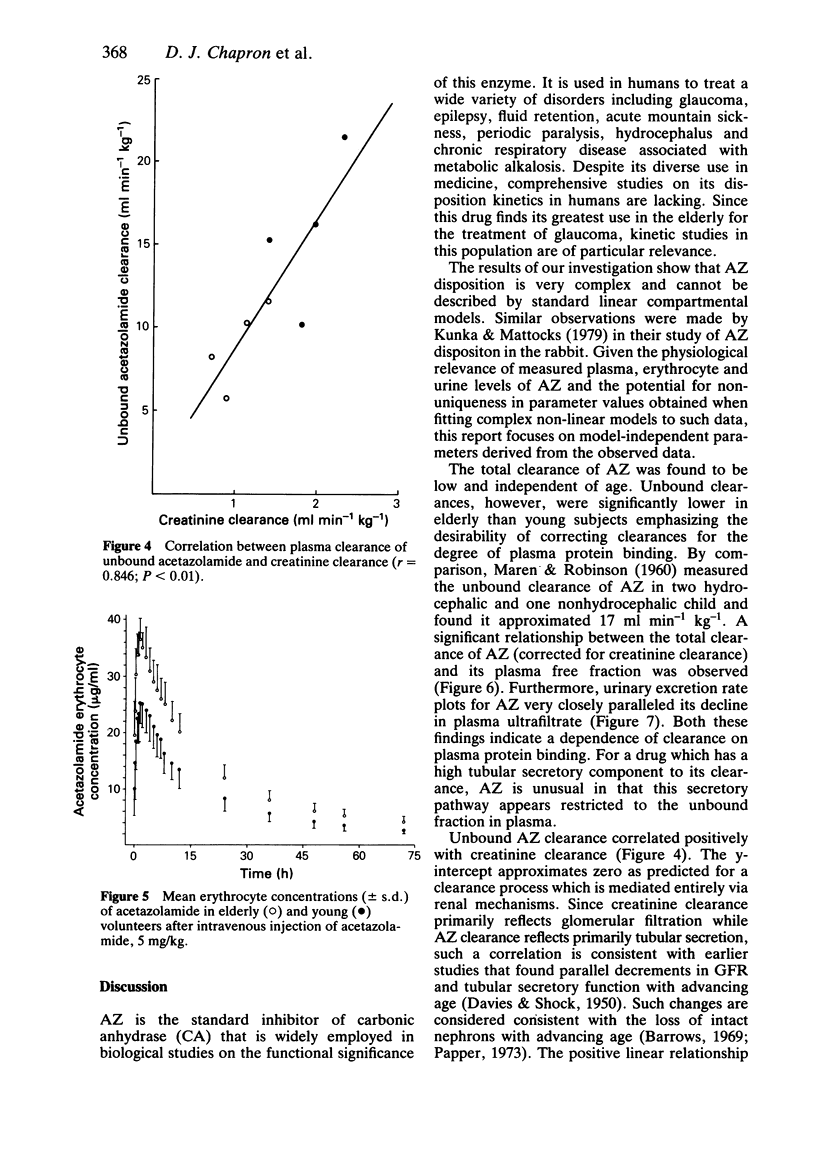
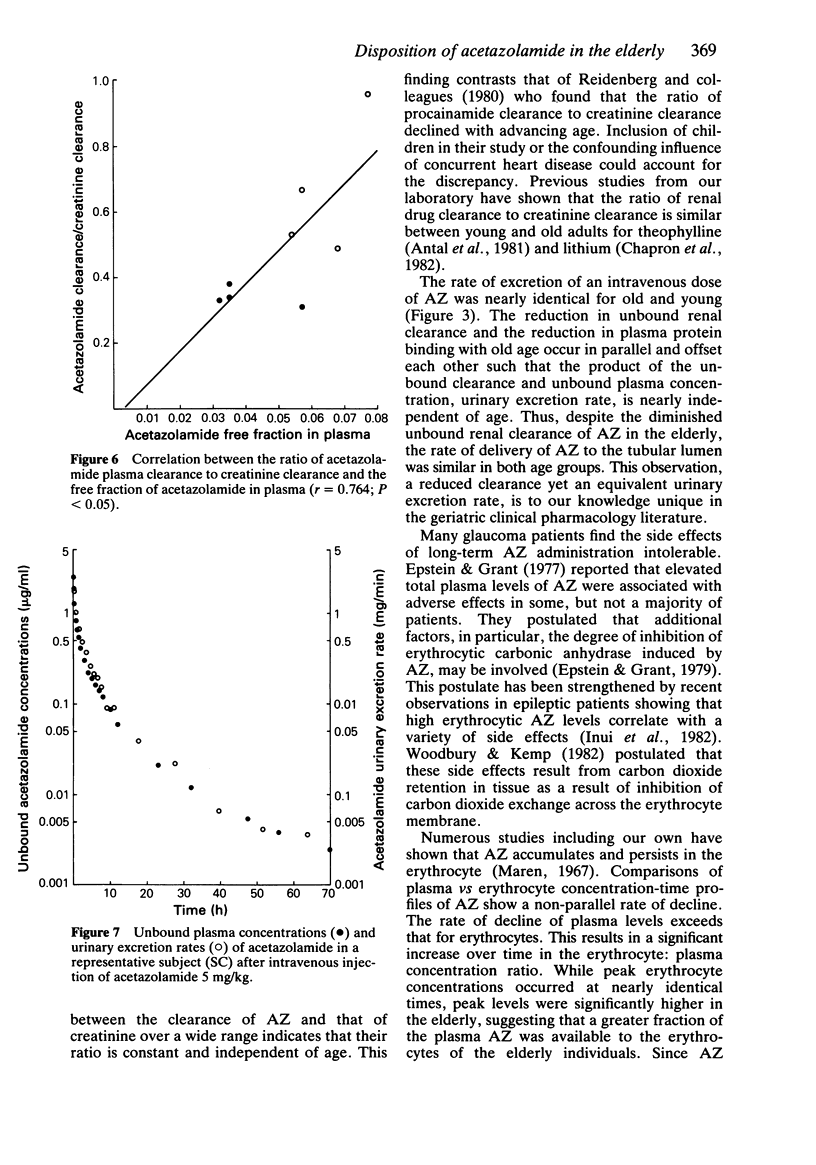
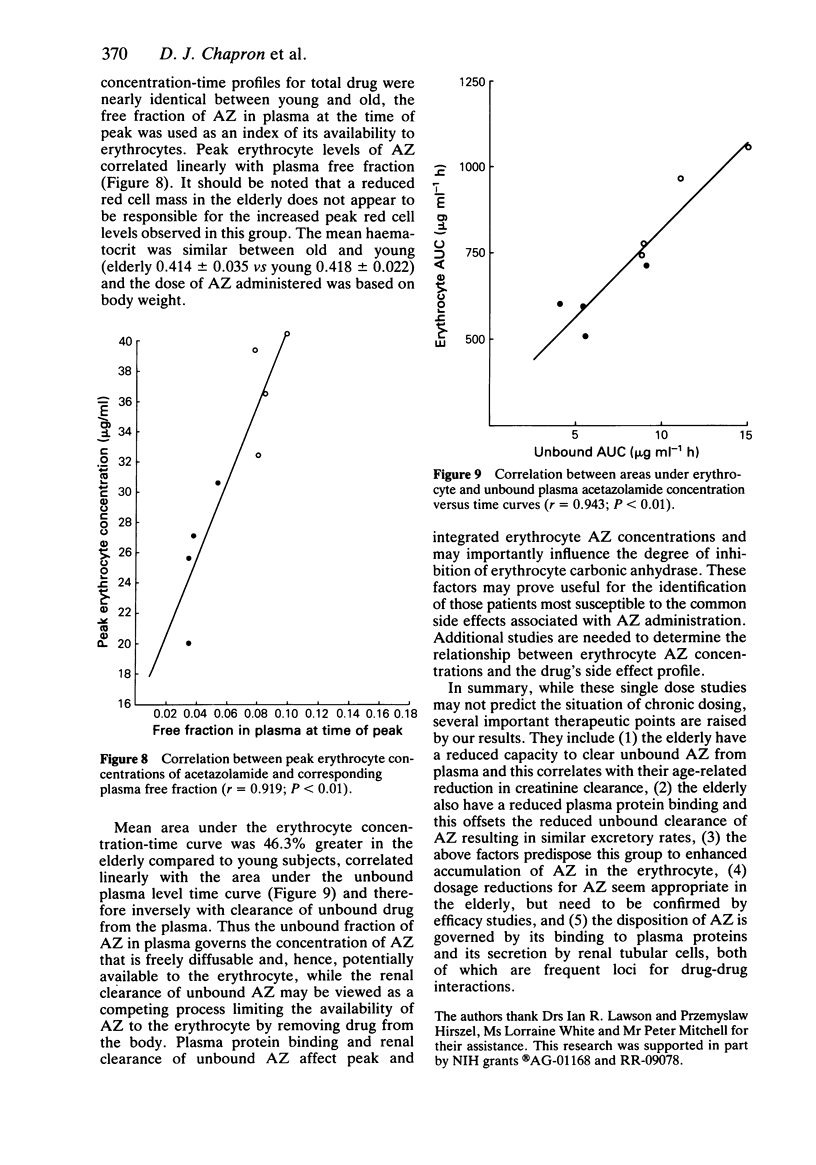
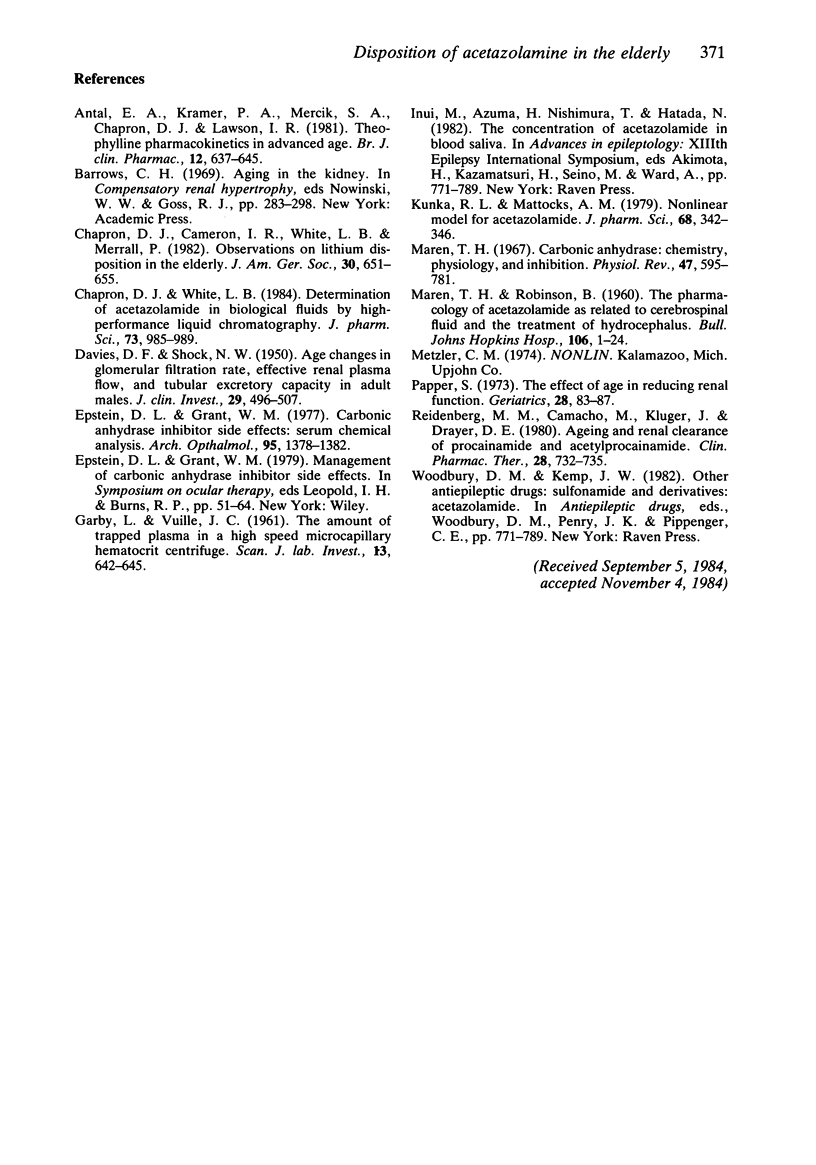
Selected References
These references are in PubMed. This may not be the complete list of references from this article.
- Antal E. J., Kramer P. A., Mercik S. A., Chapron D. J., Lawson I. R. Theophylline pharmacokinetics in advanced age. Br J Clin Pharmacol. 1981 Nov;12(5):637–645. doi: 10.1111/j.1365-2125.1981.tb01282.x. [DOI] [PMC free article] [PubMed] [Google Scholar]
- Chapron D. J., Cameron I. R., White L. B., Merrall P. Observations on lithium disposition in the elderly. J Am Geriatr Soc. 1982 Oct;30(10):651–655. doi: 10.1111/j.1532-5415.1982.tb05064.x. [DOI] [PubMed] [Google Scholar]
- Chapron D. J., White L. B. Determination of acetazolamide in biological fluids by reverse-phase high-performance liquid chromatography. J Pharm Sci. 1984 Jul;73(7):985–989. doi: 10.1002/jps.2600730732. [DOI] [PubMed] [Google Scholar]
- DAVIES D. F., SHOCK N. W. Age changes in glomerular filtration rate, effective renal plasma flow, and tubular excretory capacity in adult males. J Clin Invest. 1950 May;29(5):496–507. doi: 10.1172/JCI102286. [DOI] [PMC free article] [PubMed] [Google Scholar]
- Epstein D. L., Grant W. M. Carbonic anhydrase inhibitor side effects. Serum chemical analysis. Arch Ophthalmol. 1977 Aug;95(8):1378–1382. doi: 10.1001/archopht.1977.04450080088009. [DOI] [PubMed] [Google Scholar]
- GARBY L., VUILLE J. C. The amount of trapped plasma in a high speed micro-capillary hematocrit centrifuge. Scand J Clin Lab Invest. 1961;13:642–645. doi: 10.3109/00365516109137338. [DOI] [PubMed] [Google Scholar]
- Kunka R. L., Mattocks A. M. Nonlinear model for acetazolamide. J Pharm Sci. 1979 Mar;68(3):342–346. doi: 10.1002/jps.2600680323. [DOI] [PubMed] [Google Scholar]
- MAREN T. H., ROBINSON B. The pharmacology of acetazolamide as related to cerebrospinal fluid and the treatment of hydrocephalus. Bull Johns Hopkins Hosp. 1960 Jan;106:1–24. [PubMed] [Google Scholar]
- Maren T. H. Carbonic anhydrase: chemistry, physiology, and inhibition. Physiol Rev. 1967 Oct;47(4):595–781. doi: 10.1152/physrev.1967.47.4.595. [DOI] [PubMed] [Google Scholar]
- Papper S. The effects of age in reducing renal function. Geriatrics. 1973 May;28(5):83–87. [PubMed] [Google Scholar]
- Reidenberg M. M., Camacho M., Kluger J., Drayer D. E. Aging and renal clearance of procainamide and acetylprocainamide. Clin Pharmacol Ther. 1980 Dec;28(6):732–735. doi: 10.1038/clpt.1980.228. [DOI] [PubMed] [Google Scholar]


